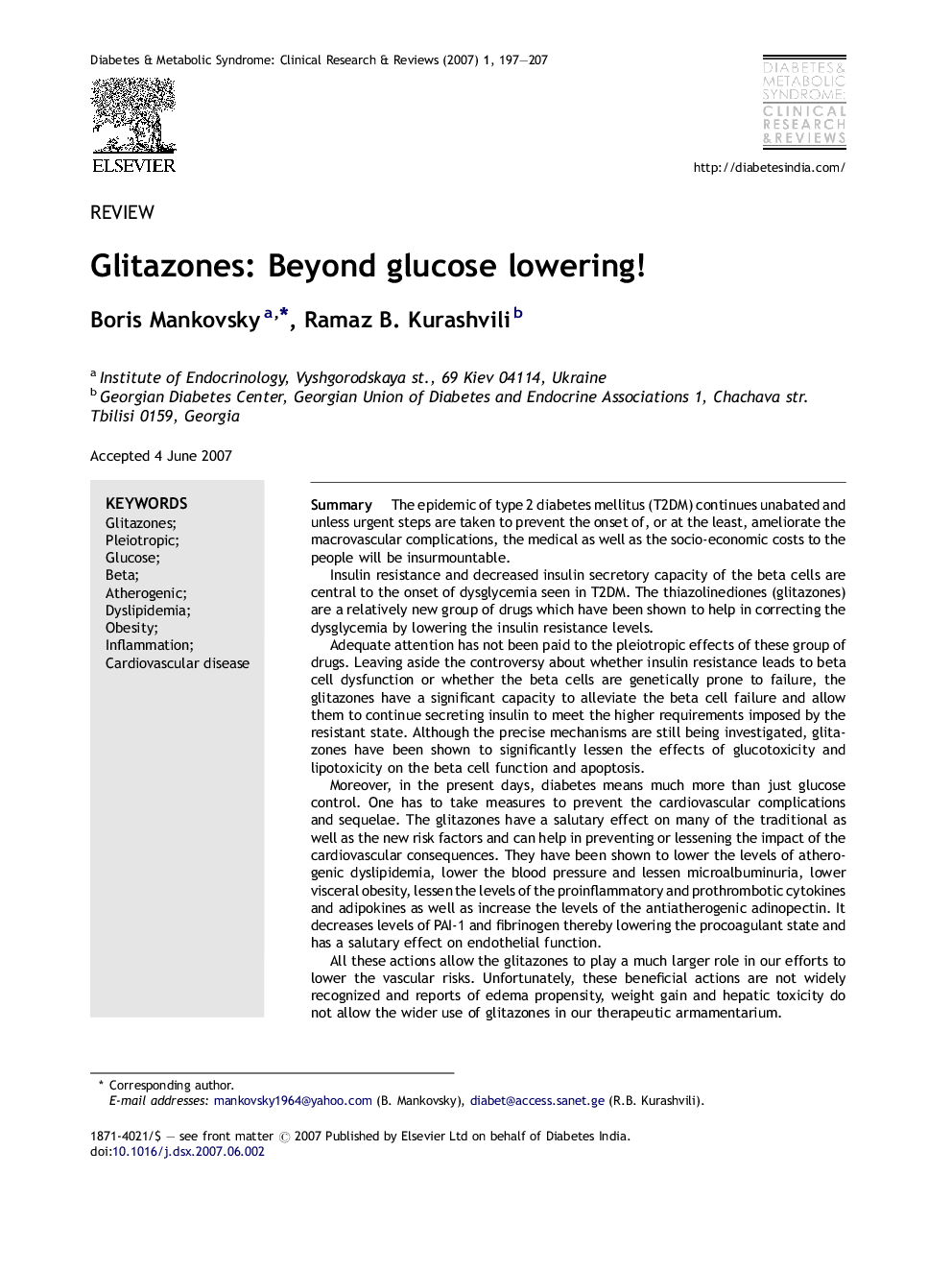| Article ID | Journal | Published Year | Pages | File Type |
|---|---|---|---|---|
| 2910429 | Diabetes & Metabolic Syndrome: Clinical Research & Reviews | 2007 | 11 Pages |
SummaryThe epidemic of type 2 diabetes mellitus (T2DM) continues unabated and unless urgent steps are taken to prevent the onset of, or at the least, ameliorate the macrovascular complications, the medical as well as the socio-economic costs to the people will be insurmountable.Insulin resistance and decreased insulin secretory capacity of the beta cells are central to the onset of dysglycemia seen in T2DM. The thiazolinediones (glitazones) are a relatively new group of drugs which have been shown to help in correcting the dysglycemia by lowering the insulin resistance levels.Adequate attention has not been paid to the pleiotropic effects of these group of drugs. Leaving aside the controversy about whether insulin resistance leads to beta cell dysfunction or whether the beta cells are genetically prone to failure, the glitazones have a significant capacity to alleviate the beta cell failure and allow them to continue secreting insulin to meet the higher requirements imposed by the resistant state. Although the precise mechanisms are still being investigated, glitazones have been shown to significantly lessen the effects of glucotoxicity and lipotoxicity on the beta cell function and apoptosis.Moreover, in the present days, diabetes means much more than just glucose control. One has to take measures to prevent the cardiovascular complications and sequelae. The glitazones have a salutary effect on many of the traditional as well as the new risk factors and can help in preventing or lessening the impact of the cardiovascular consequences. They have been shown to lower the levels of atherogenic dyslipidemia, lower the blood pressure and lessen microalbuminuria, lower visceral obesity, lessen the levels of the proinflammatory and prothrombotic cytokines and adipokines as well as increase the levels of the antiatherogenic adinopectin. It decreases levels of PAI-1 and fibrinogen thereby lowering the procoagulant state and has a salutary effect on endothelial function.All these actions allow the glitazones to play a much larger role in our efforts to lower the vascular risks. Unfortunately, these beneficial actions are not widely recognized and reports of edema propensity, weight gain and hepatic toxicity do not allow the wider use of glitazones in our therapeutic armamentarium.This brief review discusses the pleiotropic effects of the glitazones and one would sincerely feel that they should be used early, in contrast to their present use as the third oral agent to be used in our management.
